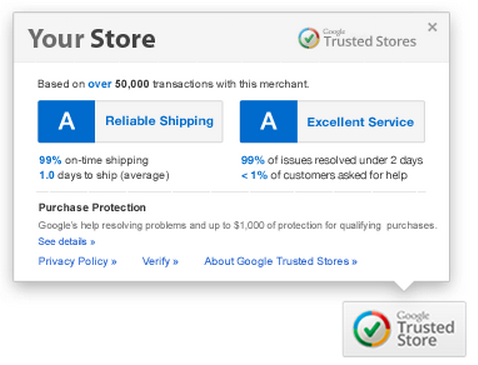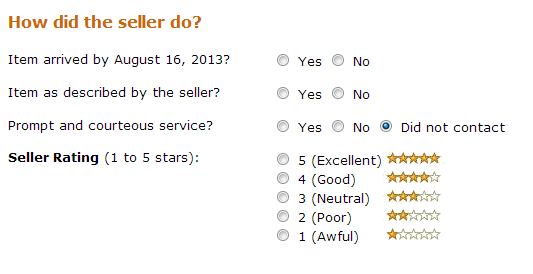7 Tips for Starting A Successful Ecommerce Business

An ecommerce business can be a great way to make a living, but if you don’t do it right, your earnings will be lackluster. Things like a quality website, a reliable shopping cart service, customer guarantees and traffic-generating efforts will go a long way in building a platform for success.
There’s a right way and a wrong way to start an ecommerce business, and here are a few tips for getting started.
Sure, it sounds like a great idea: Set up shop and start selling some products. But there are a lot of online stores out there. You’ll need to define a tight niche and uncover an unmet need in the marketplace to solidify your chances for success.
By specializing in a tightly defined field and building out a concrete plan for marketing your business, you’ll attract more customers than by just simply setting up a store and waiting for the customers to roll in.
Get a running start with a solid business plan.
An oversaturated niche is hard to beat. If you’re finding there are dozens of other ecommerce sites dedicated solely to your areas of interest, take a look at how you can further define your niche to cater to a more targeted audience or how you can spin your product offerings to differentiate yourself from your competition.

Who else is in your industry selling the same wares via ecommerce? It’s imperative to pinpoint your biggest competitors and identify their strengths and weaknesses. By doing so, you can outrank their strengths and capitalize on their weaknesses to provide the best products and the best customer experience in your niche.
Differentiate yourself from your competitors for the largest chance at success.
A good framework for conducting a competitive analysis is a SWOT analysis, which means strengths, weaknesses or limitations, opportunities and threats. Conduct a SWOT analysis taking an objective look at your own ecommerce business as well as those of your direct competitors.
Identify threats? Block them. Pinpoint weaknesses? Capitalize on them. Take your SWOT analysis one step further by determining how you’ll combat each competitor’s distinct advantage over what you have to offer.
Often, a website’s design can deliver a perception – positive or negative – to potential customers who land there. Making the investment in a superior design will make the difference between converting customers and bouncers who leave immediately. When visitors land on an ecommerce site, it must appear professionally designed and up-to-par. Ecommerce templates and shoddy design will turn customers away, giving the impression that some scammer is behind the site and they may never receive their merchandise.
There are too many scammers on the internet for customers to purchase with blind trust. Demonstrate your worthiness with a quality website.

Programs like Google Trusted Stores offer badges for ecommerce vendors to display on their sites, but it takes some time to earn the right to publish them. Let customers know their transactions are secure by displaying PayPal’s Certified Integration Logo or that their entire shopping experience is safe with Norton’s VeriSign badge. PayPal’s Certified logo lets customers know that their transactions are secure.
Badges and logos let customers know that you’ve done business with a merchant account vendor or an ecommerce solution in the past, and that your transactions have met certain approval standards. If and when you have the opportunity to post a badge that invokes immediate trust, do so
5. Make Checkout Painless
There are numerous applications that can enable the collection of funds from customers. Make sure that your shopping cart service utilizes the service of a reliable merchant account. PayPal, for instance, makes accepting credit cards easy, but you may want to use a more advanced shopping cart vendor for the actual transaction. Consider using Google Wallet, or other online shopping transaction vendors like ShoppingCart.

Don’t follow the “If you build it, they will come” mentality. You can set up a website on anything you choose, but you’re not going to get visitors and customers unless you take an active approach to driving people to your site. Organic SEO and PPC are two ways to drive traffic to your website.
You can drive traffic using organic SEO, such as link building and social media, or you can use PPC advertising.
Using PPC, you’re guaranteed visitors to your site if you’re willing to fork out some upfront cash to bid on relevant keywords. Organic SEO is a must-have component, but it takes more time to build a solid SEO strategy and make it work in terms of generating traffic.

The single most important element in running a successful ecommerce store is accountability. Live up to your promises. If you offer a no-hassle return policy, follow it. If a potential customer has questions about the purchasing process, guarantees or your products, answer them – and do so in a timely manner. The success of your ecommerce website depends largely on customer experience.
If a customer has a complaint, it’s imperative to follow up and try to resolve the situation, even if that means offering a full refund. A happy customer tells a friend; an unhappy customer tells everyone.
If you encounter a negative customer service experience, you can avoid the potential fallout by simply creating a win-win solution out of the conflict. The happier a customer leaves at the end of the day, the more positive word-of-mouth marketing you’ll generate.
Starting a successful ecommerce business isn’t easy. It takes time and dedication to get the pieces of the puzzle in place before you even consider launching. You should be prepared with an action plan in terms of marketing, which includes a stellar website, a thorough competitive analysis of the current marketplace, organic SEO and pay-per-click advertising, a customer guarantee and a reliable merchant account, preferably one which offers added security for credit card transactions.
By setting up these factors in advance of launching your ecommerce site, you’ll be well prepared for success when the orders start rolling in.
